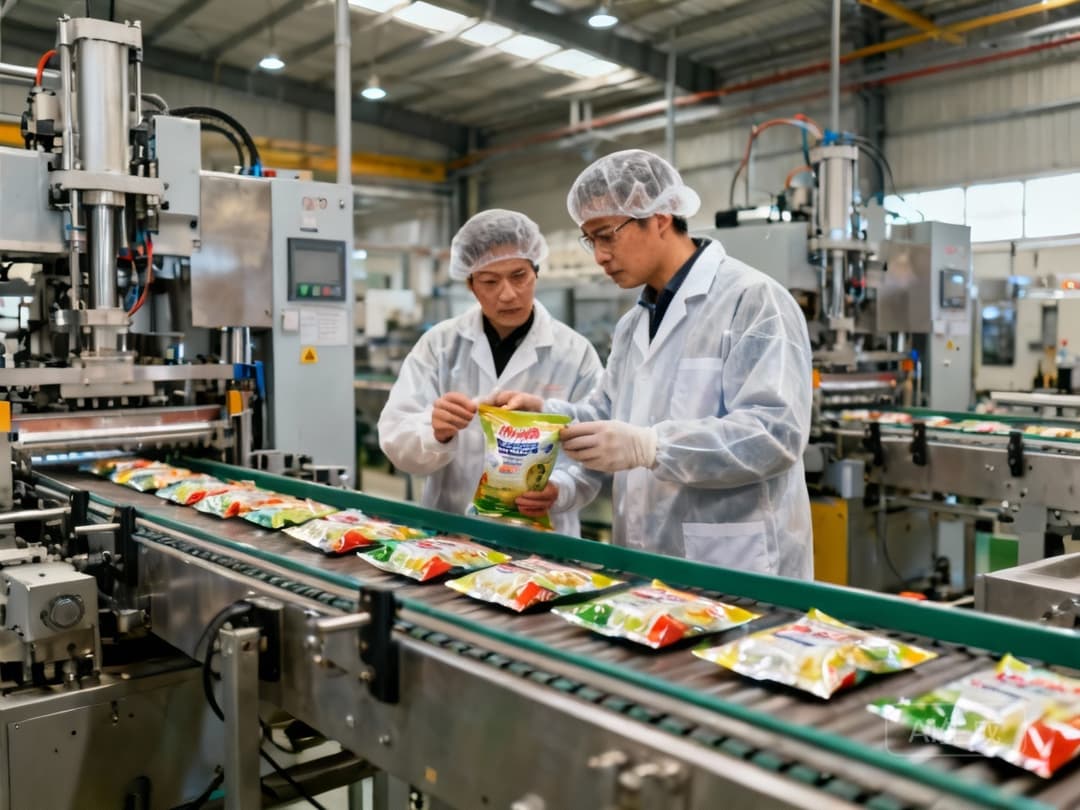Boost Packaging ROI: 20% Productivity Gain from $300K Training Investment #71

The Flexible Packaging Boom: Capturing 6.79% CAGR Through Operational Excellence
The Chinese packaging market is experiencing unprecedented growth, projected to reach $218.3 billion by 2025 with a 4.96% CAGR through 2030. However, the real opportunity lies in the flexible packaging segment, which is growing at an exceptional 6.79% CAGR. For ton bag manufacturers and bulk packaging producers, this represents both a tremendous opportunity and a significant challenge—how to scale operations efficiently to capture this growth while maintaining quality standards.
"The flexible packaging segment's 6.79% growth rate significantly outpaces the overall market, creating both opportunity and operational pressure for manufacturers." - Packaging Industry Market Analysis
This growth is primarily driven by e-commerce expansion and increased demand for durable, automation-ready packaging formats. Companies that can optimize their operations through strategic workforce development and process excellence are positioned to capture disproportionate market share.
Case Study Analysis: Proven Frameworks for Manufacturing Excellence
Government-Validated Lean Methodology
The Washington State Government's implementation of lean methodology and performance management systems provides a compelling blueprint for packaging manufacturers. Their approach completed nearly 200 Results Washington projects across five target areas, demonstrating that systematic process optimization delivers measurable outcomes.
Key implementation insights from the government case study include:
- Gradual, phased implementation proves more effective than wholesale changes
- Continuous monitoring and results management are critical success factors
- Technology serves as an enabler rather than a standalone solution
Leadership Development ROI in Manufacturing
A separate manufacturing case study demonstrated that a $300,000 investment in leadership training yielded remarkable returns:
- 20% productivity increase across trained teams
- 18% improvement in product quality
- 14.5% efficiency gains in operations
The critical success factor was aligning training objectives with specific business metrics rather than abstract development goals. This approach ensured that every training dollar contributed directly to operational outcomes.
Three-Step Implementation Framework for Packaging Manufacturers
Phase 1: Metrics Alignment and Baseline Establishment
Begin by identifying the specific operational metrics that impact your bottom line. For ton bag manufacturers, these typically include:
- Production output per operator hour
- Material waste percentages
- Equipment utilization rates
- Quality rejection rates
- On-time delivery performance
Establish current baselines for each metric and set specific improvement targets tied to the 20% productivity gain demonstrated in the case study. This creates a direct line of sight between training investments and business outcomes.
Phase 2: Progressive Implementation Roadmap
Based on the Washington State Government's successful gradual implementation approach, develop a phased rollout plan:
Quarter 1: Leadership Alignment
Train management teams on lean principles and performance management systems. Focus on creating champions who can drive change throughout the organization.
Quarter 2: Pilot Program
Select one production line or facility for initial implementation. Apply Kirkpatrick and Phillips ROI models to measure training effectiveness against your established metrics.
Quarter 3: Scale Successful Practices
Expand proven methods across additional operations while continuously refining approaches based on performance data.
Phase 3: ROI Measurement and Optimization System
Develop a customized ROI calculation template specific to packaging manufacturing. Your model should include:
- Training costs (direct and indirect)
- Productivity gains valuation
- Quality improvement financial impact
- Reduced waste and material savings
- Improved equipment utilization benefits
This system should provide monthly ROI reporting that demonstrates the financial return on your training and process improvement investments.
Integrating Technical Standards for Automation-Ready Packaging
The market insight regarding increased demand for automation-ready packaging formats requires specific technical adaptations. For ton bag manufacturers, this means designing products that integrate seamlessly with:
- Bulk bag filling equipment compatibility
- Automated palletizing systems
- Bulk bag discharger requirements
- Conveyor system integration points
- Standardized lifting and handling features
Investing in equipment and training that supports these technical standards positions manufacturers to serve clients who are automating their packaging operations—a growing segment within the flexible packaging market.
Actionable Recommendations for Immediate Implementation
Based on the successful case studies and market data, packaging manufacturers should prioritize these actions:
- Conduct a skills gap analysis to identify specific training needs aligned with your operational metrics
- Allocate training budget strategically with clear ROI expectations—the $300,000 investment case demonstrates appropriate scaling
- Implement lean methodology gradually, starting with pilot programs before full-scale deployment
- Develop automation-ready product standards to capture growth in this high-demand segment
- Establish continuous measurement systems to track training effectiveness and operational improvements
The combination of strategic workforce development, process optimization, and technical standardization creates a powerful framework for capturing the flexible packaging market's exceptional growth while delivering significant operational improvements and financial returns.
"Manufacturers who invest in both human capital development and process excellence are best positioned to capitalize on the flexible packaging growth opportunity while achieving 20%+ efficiency gains." - Industrial Manufacturing Expert
By implementing these data-backed strategies, packaging manufacturers can transform the industry's growth challenges into competitive advantages, driving both market share gains and operational excellence.
